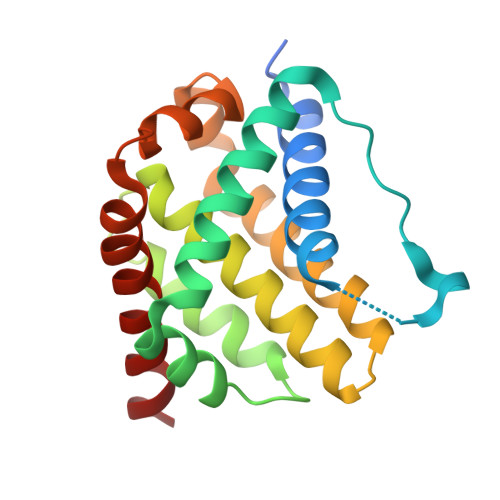An Autoinhibited Dimeric Form of BAX Regulates the BAX Activation Pathway.
Garner, T.P., Reyna, D.E., Priyadarshi, A., Chen, H.C., Li, S., Wu, Y., Ganesan, Y.T., Malashkevich, V.N., Almo, S.S., Cheng, E.H., Gavathiotis, E.(2016) Mol Cell 63: 485-497
- PubMed: 27425408
- DOI: https://doi.org/10.1016/j.molcel.2016.06.010
- Primary Citation of Related Structures:
4S0O, 4S0P - PubMed Abstract:
Pro-apoptotic BAX is a cell fate regulator playing an important role in cellular homeostasis and pathological cell death. BAX is predominantly localized in the cytosol, where it has a quiescent monomer conformation. Following a pro-apoptotic trigger, cytosolic BAX is activated and translocates to the mitochondria to initiate mitochondrial dysfunction and apoptosis. Here, cellular, biochemical, and structural data unexpectedly demonstrate that cytosolic BAX also has an inactive dimer conformation that regulates its activation. The full-length crystal structure of the inactive BAX dimer revealed an asymmetric interaction consistent with inhibition of the N-terminal conformational change of one protomer and the displacement of the C-terminal helix α9 of the second protomer. This autoinhibited BAX dimer dissociates to BAX monomers before BAX can be activated. Our data support a model whereby the degree of apoptosis induction is regulated by the conformation of cytosolic BAX and identify an unprecedented mechanism of cytosolic BAX inhibition.
Organizational Affiliation:
Department of Biochemistry and Department of Medicine, Albert Einstein Cancer Center, Wilf Family Cardiovascular Research Institute, Albert Einstein College of Medicine, Bronx, NY 10461, USA.














